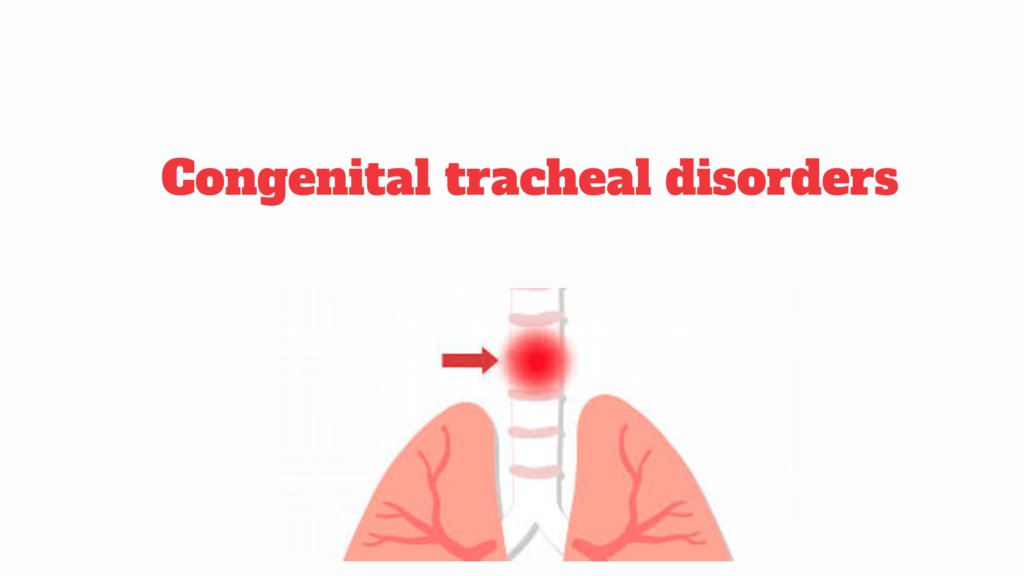Congenital tracheal disorders are structural abnormalities of the trachea (windpipe) present at birth. These conditions may affect airway function, breathing, and feeding, and can range from mild to life-threatening.
🧬 Major Congenital Tracheal Disorders
1. Tracheomalacia (Congenital)
- Most common congenital tracheal disorder
- Soft or underdeveloped tracheal cartilage causes collapse during breathing
- May occur alone or with:
- Tracheoesophageal fistula (TEF)
- Esophageal atresia
- Other congenital syndromes (e.g., VACTERL)
🩺 Symptoms:
- Noisy breathing (inspiratory or expiratory stridor)
- Chronic cough
- Difficulty feeding
- Cyanotic spells (turning blue)
2. Congenital Tracheal Stenosis
- Trachea is narrowed along part or all of its length
- Usually due to complete tracheal rings (instead of normal C-shaped cartilage)
🩺 Symptoms:
- Severe respiratory distress in infancy
- Stridor or wheezing
- Recurrent pneumonia
- Associated with cardiac anomalies (like pulmonary artery sling)
3. Tracheoesophageal Fistula (TEF)
- Abnormal connection between the trachea and esophagus
- Often occurs with esophageal atresia (the esophagus ends in a pouch)
🩺 Symptoms:
- Choking, coughing, or cyanosis with feeds
- Frothy saliva
- Abdominal distension (air in stomach via fistula)
4. Laryngotracheoesophageal Cleft
- A gap between the larynx/trachea and esophagus
- Varies from small (partial) to large (complete cleft)
🩺 Symptoms:
- Aspiration
- Weak cry
- Difficulty swallowing
- Recurrent respiratory infections
5. Tracheal Agenesis (Extremely Rare)
- Absence of the trachea
- Often incompatible with life
- Requires emergency airway creation at birth (if possible)
🧪 Diagnosis
- Bronchoscopy (gold standard for direct visualization)
- CT scan (especially 3D reconstruction)
- Chest X-ray
- Barium swallow (for TEF or aspiration)
- Echocardiogram (check for associated heart anomalies)
💊 Management
- Depends on type and severity of the defect
🔧 Mild Cases (e.g., mild tracheomalacia):
- Conservative treatment
- Monitoring (often improves with age)
⚠️ Moderate to Severe Cases:
- Surgical repair (e.g., slide tracheoplasty for stenosis, fistula ligation)
- Airway support (tracheostomy, CPAP/BiPAP)
- Nutritional support (feeding tubes if aspiration is an issue)
👶 Associated Syndromes
- VACTERL association
- CHARGE syndrome
- Down syndrome
- DiGeorge syndrome
🛡️ Prognosis
- Mild cases (e.g., isolated tracheomalacia): often improve by age 2
- Severe cases: require surgery and long-term follow-up
- Early diagnosis and coordinated care from ENT, pulmonology, surgery, and pediatrics improve outcomes
